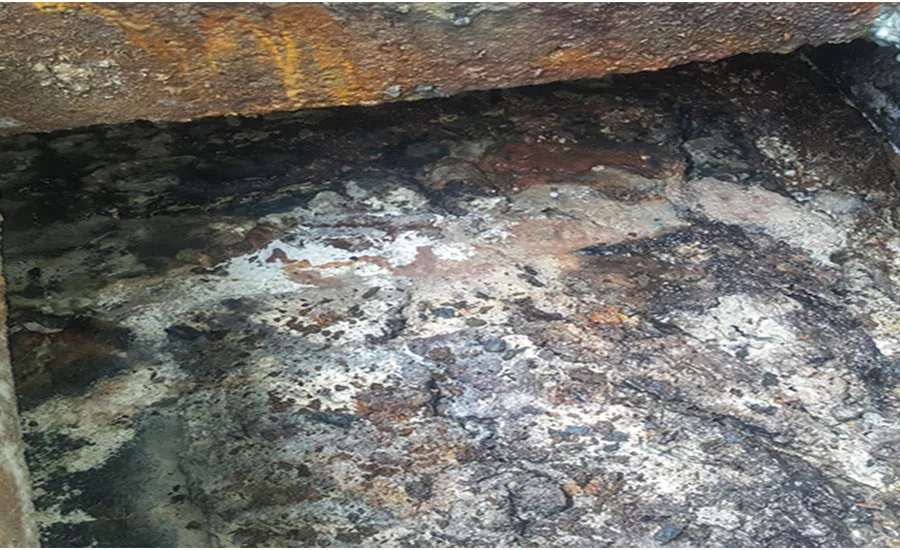Wastewater Streams
When the FOG lifts…
It’s time to clean the fats, oils and greases out of your lift station. Here’s a quick checklist of concerns caused by FOG

When FOG rises to the top of your lift station and practically extends to the bottom, it’s time for a thorough cleaning. Photo courtesy of Kurita America
Whether you’re a RTE processor or food service establishment (FSE), publicly owned treatment works (POTWs) usually have manuals or handbooks to help with managing fats, oils and greases (FOG) in waste streams. They also provide stern warnings about excessive levels of FOG in waste streams. But, if you have your own pretreatment or wastewater system on site, you can appreciate the difficulties that POTWs face when too much FOG winds up in lines or at the input of the treatment system.
And if you try to fix the situation by throwing chemicals—such as emulsifying agents—at FOG buildups in the plant rather than mechanically removing the buildup, you can create further problems. While emulsifying agents can dissolve solidified grease, the grease can re-congeal further downstream in the sanitary collection system. Caustics, acids and solvents can have other harmful effects on the wastewater treatment system and be hazardous to those working in the wastewater collection system.
 “FOG can dramatically reduce efficiency, while increasing the operational costs of your wastewater treatment system,” says Daryl Mandoza, product line manager - wastewater treatment at Kurita America. Food processing facilities often experience build-up of grease deposits or caps in their lift stations and piping. Mandoza has highlighted some possible system impacts of leaving FOG untreated—and solutions to ensure optimal system operation.
“FOG can dramatically reduce efficiency, while increasing the operational costs of your wastewater treatment system,” says Daryl Mandoza, product line manager - wastewater treatment at Kurita America. Food processing facilities often experience build-up of grease deposits or caps in their lift stations and piping. Mandoza has highlighted some possible system impacts of leaving FOG untreated—and solutions to ensure optimal system operation.
- FOG build-up can require the need to clean facility piping (hydrojet) to ensure water is moving efficiently. Estimated cost for cleaning $75/hr.
- Accumulation of FOG in lift stations or collection pits may need to be removed to restore treatment capacity. Estimated cost of pump out $100-$150/hr.
- Disposal of collected FOG can be a one-time fee, up to $500, or an annual service fee for scheduled removal, with price ranges varying.
- Failure to treat FOG in your lift station or piping can result in odors as FOG breaks down. These odors can lead to consumer complaints causing loss of goodwill and the incurred cost for odor control treatment.
- If left untreated, FOG can increase the need for repairs or replacement of equipment, while escalating degradation of existing system infrastructure.
- Possibility of a Notice of Violation (NOV) for lack of compliance can occur, which may negatively impact corporate image.
Potential solutions to protect and maintain your system
- Removal of FOG in the production stage can prevent the need to treat downstream.
- Evaluate your cleaning and sanitation preventative maintenance program to mitigate impact of FOG on your wastewater treatment system.
- The implementation of a biological program is an effective method used to remove FOG.
The incorporation of any of these solutions will help reduce operational cost, as well as capital expenses your facility may be experiencing. POTWs can help to a limited extent with questions, but a third-party wastewater specialist can help detail the issues and remedy the situation. “A comprehensive analysis into your treatment process with a water treatment expert is the best way to determine the level and type of solution that best meets your facility’s needs,” says Mandoza.
For more information, www.kuritaamerica.com
Resource:
“Why you may want to think seriously about wastewater treatment, FE, July 24, 2020
Looking for a reprint of this article?
From high-res PDFs to custom plaques, order your copy today!






